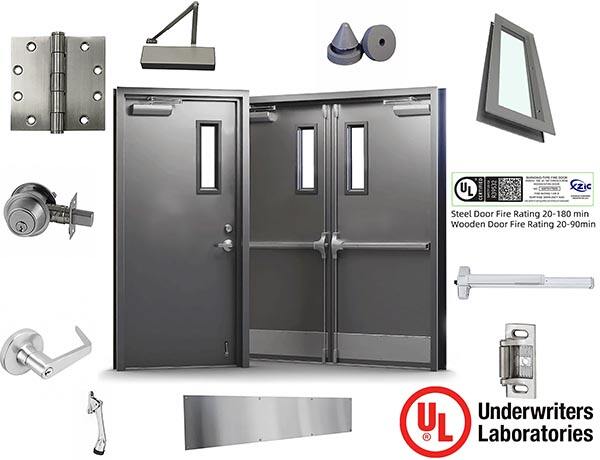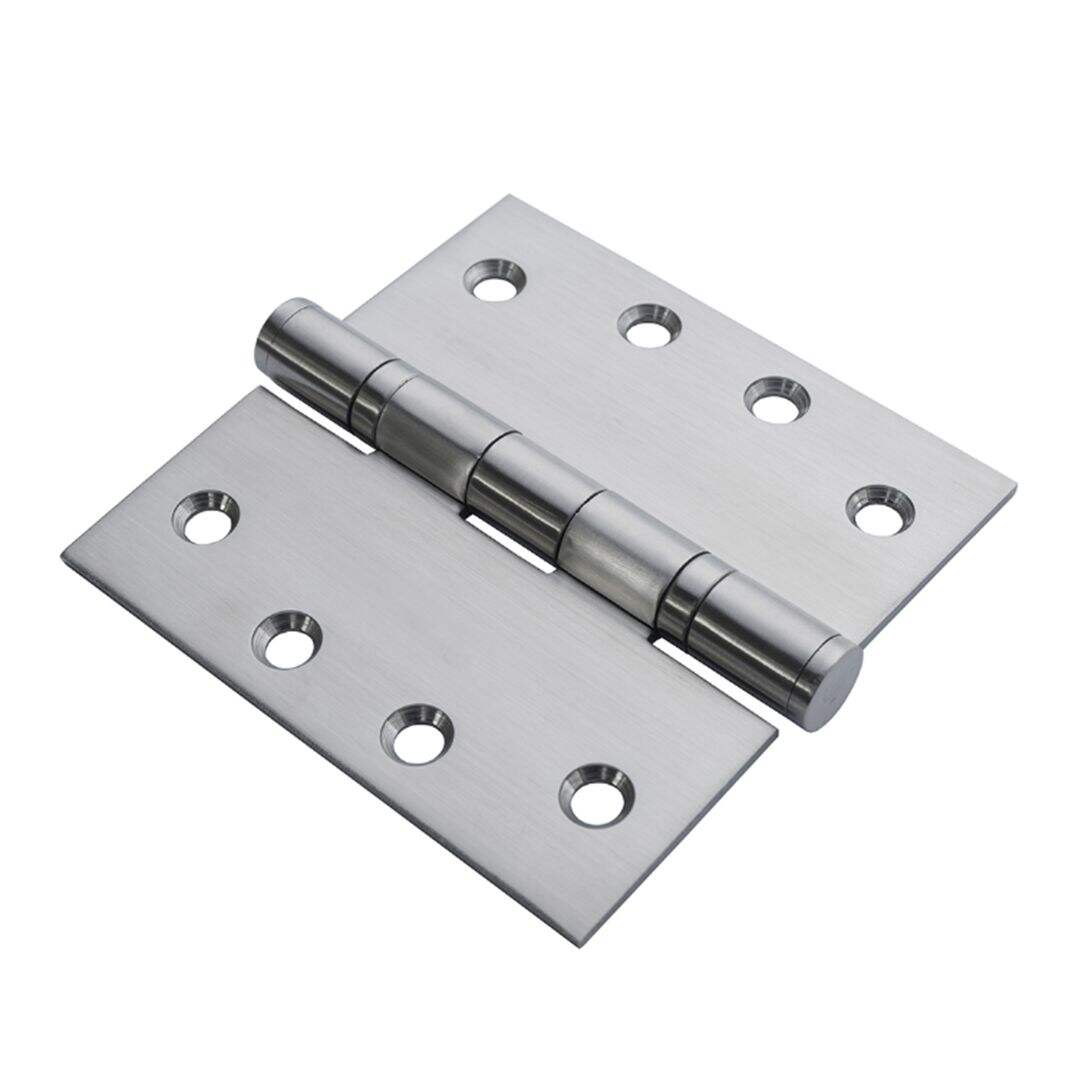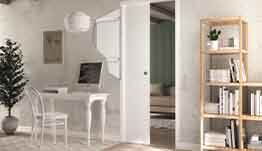Fire rated door hardware selection - Door closer
Selecting hardware for fire doors is a simple yet knowledge required task. Despite the variety of hardware available, the selection process is clear: first determine the required functions, then filter based on purpose and functionality. This article discusses the types, purposes, and adaptability of door closer for fire doors.
Functions of Door Closer
The primary function of a door closer is to automatically close a door, ensuring it shuts smoothly and reliably after being opened. Through an internal spring and hydraulic system, the door closer enables automatic closure, reducing the need for manual operation. Functions include:
- Speed Control: Door closer typically feature adjustable closing speed and latching speed to ensure smooth and effective closure.
- Buffering: Hydraulic damping prevents abrupt closure, protecting the door frame, door body, and hinges, thus extending their lifespan.
- Hold-Open (Optional): Some closer allow the door to remain open at specific angles for temporary ventilation or passage.
- Backcheck Function: High-end closer include backcheck adjustments to prevent forceful closure due to strong winds or external forces.
- Delayed Closing (Optional): Certain closer offer delayed closing, ideal for settings like hospitals or nursing homes requiring slower closure.
Purposes of Door closer
Door closer are widely used in various settings, particularly in public and commercial buildings, with the following key purposes:
- Safety Assurance: On fire doors, closer ensure automatic closure during a fire, preventing the spread of flames and smoke.
- Energy Efficiency and Soundproofing: In air-conditioned or sound-sensitive areas, closer keep doors closed to minimize energy loss or noise transmission.
- Convenience: In high-traffic areas (e.g., malls, hospitals, offices), closer reduce the need for manual door closing, improving passage efficiency.
- Security and Privacy: In residences or offices, closer ensure doors remain closed to enhance security and privacy.
- Special Environments: In settings like hospital sterile rooms or laboratories, closer maintain sealed conditions to prevent contamination.
Fire Standards for Door closer
Door closer used in fire doors are subject to stringent fire safety standards, including:
- Fire Certifications:
- International Standards: Such as UL (USA), EN (Europe), and BS (UK). ANSI/UL 10C is a common testing standard for fire-rated closer.
- Chinese Standards: Compliance with Fire Doors for Buildings (GB 12955-2008), requiring closer to pass national fire product certification (e.g., 3C certification).
- Fire Resistance:
-
- Fire-rated closer must function in high-temperature environments (fire scenarios), typically for a specified duration (e.g., 30 or 60 minutes).
- Materials must be heat-resistant, often steel or special alloys, to avoid melting or deformation during a fire.
- Reliable Closure:
- Fire door closer must ensure complete closure under all conditions to prevent smoke or flames from passing through gaps.
- Some closer include electromagnetic release devices linked to fire alarm systems, holding doors open normally but releasing them to close during a fire.
- Testing Requirements:
- closer must pass cycle testing (e.g., EN 1154 requires at least 500,000 cycles) to ensure long-term reliability.
- In fire tests, closer must maintain functionality in simulated fire conditions, meeting fire resistance ratings (e.g., 1 or 2 hours).
Types and Installation Methods
- Surface-Mounted closer: The most common type, using a lever arm and hydraulic damping, installed on the door or frame, suitable for most door types.
- Concealed closer: Installed within the door frame or leaf, aesthetically pleasing but complex to install, typically unsuitable for heavy doors. Common in hotels.
- Floor Springs: Ideal for glass or heavy doors, installed in the floor, combining closing and positioning functions.
- Electric closer: Designed for doors requiring automatic opening, offering aesthetics, efficiency, and functionality. In hospitals, they also reduce contact-based transmission.
Selection Considerations
- Door Specifications: closer must be selected based on door weight, width, and material. Light doors (e.g., wooden) and heavy doors (e.g., steel fire doors) require different force levels (EN 1-7).
-
Adjustment and Maintenance:
- Regular checks for hydraulic oil leaks or loose adjustment screws are necessary to maintain performance.
- Precise alignment during installation is critical to avoid off-center issues, which can cause improper closure or wear.
-
Environmental Adaptability:
- Outdoor closer require corrosion and water resistance, often with special coatings or seals.
- In low-temperature environments, hydraulic oil must remain fluid to prevent closer failure.
We are XZIC(Shanghai Xunzhong Industry Co., Ltd.) We are professional on fire rated door product. Our company produces 50000 sets of steel fire doors and 20000 sets of wooden fire doors every year. We have the most complete UL certification in China. Our high-quality fire-rated doors, which are specifically designed to meet US and Canadian standards. Steel fire door up to 3 hours fire rated, wooden fire door up to 90 mins. Also we do other kind of doors for residential use. All the doors can be customized.
More information see our website: www.ulfiredoormfg.com
Get in touch with our sales Contact by mail: [email protected]
Recommended Products
Hot News
-
UL fire door Regulatory and Certification Requirements
2025-08-08
-
What are the types for fire Doors?
2025-07-12
-
Why Hollow Metal Doors Are a Cost-Effective Long-Term Solution for Businesses
2025-07-23
-
What’s the price difference for UL LISTED FIRE DOOR of mahogany/oak/ beech/walnut veneer finish compared with Formica /TAK/ Wilsonart Laminated finish ?
2025-07-31
-
What is MDF (medium-density fiberboard) Door?
2025-06-15
-
Essential Aspects of UL Metal Fire Door Inspection
2024-01-02
-
XZIC Delivers Superior Quality UL Fire Doors to Our Valued Client in Qatar
2024-01-02
-
Can hollow metal doors be insulated?
2024-01-02
 EN
EN
 AR
AR
 BG
BG
 NL
NL
 FR
FR
 DE
DE
 EL
EL
 IT
IT
 KO
KO
 PL
PL
 PT
PT
 RO
RO
 RU
RU
 ES
ES
 TL
TL
 IW
IW
 ID
ID
 UK
UK
 VI
VI
 TH
TH
 FA
FA
 AF
AF
 MS
MS
 SW
SW
 BE
BE
 UR
UR
 BN
BN
 KM
KM
 LO
LO
 LA
LA
 MI
MI
 MN
MN
 MY
MY
 KK
KK
 MG
MG
 SU
SU
 TG
TG
 UZ
UZ
 KY
KY
 XH
XH











